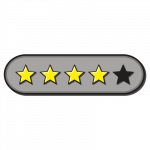
Welcome back for part 2 of our Amazon Private LabelThis is what you call products manufactu... More How-To series. If you missed part 1, you can check it out here. Last time, we covered the basics of how to get started selling private label items on Amazon. In this post, we’ll do a deep dive into some of the more advanced private label business strategies and concepts.
The Advanced
Once you’ve decided to sell private label, created and registered your brand, and found a reliable and affordable supplier, you’ll be ready to list your items for sale on Amazon. And, while the prep work for the aforementioned items may have been tough and time consuming, these nexts steps are truly the real work for making a private label business successful. Assuming you made the right sourcing decisions in the first steps.
Optimize your listings for increased sales and visibility

While it may seem silly to invest so much time and energy into a listing’s title, description, and catalog page information, it’s a step that’s vitaly important to your listing (and brand) ranking well and gaining visibility on Amazon. Why would you want good rankings and higher visibility, you ask? Because that is your gateway to sales. And, best of all, profits.
Since this topic could very well be its own blog series, I’ll touch briefly on the most important aspects of creating a well optimized private label listing.
Product Title
Amazon limits titles to 250 characters. And all best practice books say to use as many as you can. Using all is best. To write a good title, think about what you and the people in your life would search for on Amazon to find a product like yours. While it’s important, of course, to accurately describe your item and its attributes in the title, you should also add something of value. Think of a problem your item solves or a benefit of using it and incorporate that into your title too. And, don’t forget the keywords!
Product Features
This is where you can highlight some of the points that were difficult to squeeze into your 250 character limit title. And elaborate more on what makes your product stand out. Here, the character limit is 1000. So go wild. Use bullet points (at least 4 but more is better) to entice buyers and show why your product is superior to those of your competitors. Start with what’s most important and work your way down from there. If your item solves a problem like I mentioned above, give a bit more detail on that. This is also a good place to include spec information for your product, such as what material it’s made of. Warranty information should be included as well. Keep your bullet points concise but full of detail. Addressing issues or concerns for buyers before they arise can help you increase your sales and brand reliability.
Product Description
If we’re comparing building your listing to an iceberg; the title is the tip, the product features are what’s just below the surface, and the product description is the huge foundation that keeps the rest afloat. It’s imperative here that you use all 2000 characters to expound on the benefits and unique features and qualities of your item. Build a solid foundation for your product to stand on. Dive deep to explain what problems it solves and how it would benefit a buyer’s life. Put yourself in the shoes of the customer and detail all the information you would want to know were you making this purchase. Make it easy to read but tell a captivating story to your buyer with compelling arguments for why your product is a must-have item. And use keywords where you can.
Product Images
Amazon allows you to post up to 9 product images for your listing. And, again, best practice is to use them all. If it’s hard to imagine using 9 images for one product- split it up into product pictures, packaging photos, and images of how the item is used in daily life. Remember, these images are also selling your item, so ensure the photos are very high quality and can maintain that quality when zoomed in on. They should tell their own compelling story of why your product is a good purchase. Here are Amazon’s product image requirements. Be sure to comply with those and all other Amazon policies at all times to avoid both listing and account suspensions.
Create a customer experience that encourages product rating and reviews
 The first step here will be accomplished at the beginning of your private label business; ensuring that your product is of highest quality, consistency, and reliability. Once you’ve listed your high quality and in-demand product, you should follow up all sales with an automated email campaignSellers and vendors have a variety of ad... More. Keep the buyer aware of the status of their order, personally thank them for their purchase, remind them of the product and benefits. And, finally, without offering any incentive, encourage the buyer to leave a product review and seller feedbackA performance rating on a scale of 1 to ... More. Remember, rankings and reviews are paramount to a successful private label brand so spend some time here dialing in strategies that create the desired end results you’re looking for.
The first step here will be accomplished at the beginning of your private label business; ensuring that your product is of highest quality, consistency, and reliability. Once you’ve listed your high quality and in-demand product, you should follow up all sales with an automated email campaignSellers and vendors have a variety of ad... More. Keep the buyer aware of the status of their order, personally thank them for their purchase, remind them of the product and benefits. And, finally, without offering any incentive, encourage the buyer to leave a product review and seller feedbackA performance rating on a scale of 1 to ... More. Remember, rankings and reviews are paramount to a successful private label brand so spend some time here dialing in strategies that create the desired end results you’re looking for.
Reprice your listings!
Automated repricingIt’s the practice of controlling and c... More on Amazon has ended up with the negative connotations of chasing competitors around, creating price wars, and driving prices down. But, for private label sellers, it’s different. It’s about maximizing profits and optimizing sales velocity. And staying competitive within the landscape of similar offers from other private label sellers. These are all imperative avenues to a successful private label business. And Sellery, our web-based repricing tool, can help you accomplish all that and more.
Reprice your listing based on similar product offers

This is a must-have feature in any private label seller’s arsenal. And Sellery makes it a very easy, straightforward, and automated process. Here’s how it works:
- Identify listings similar to yours but on different catalog pages. You’ll want to make sure you do some searches on Amazon to see what kinds of listings and offers come up when you do product keyword searches that match what you are selling.
- Select the sellers/listings you want to include in your repricing logic.
- Set up strategies for your own price using those other price values as upper and lower limits or based on the averages or lowest prices of the other similar offers. This will ensure that 1. Your price remains competitive in this pool and 2. You can even be the lowest priced offer where applicable. This is key to increased private label sales because, more times than not, buyers will go for the lowest price Simply the lowest price an Amazon... More in a group of similar items.
Here’s a short video about how this feature works in Sellery.
Reprice your listing based on its sales velocity
If an item is seeing an increase in sales/demand, that’s a good opportunity to raise the price incrementally to take advantage of higher profits while it’s selling well. The best way to achieve these strategies is to set parameters for sales velocity thresholds. For example, you tell Sellery, “if my sales velocity goes beyond 3 sales per day, increase my price by 1%”. This will allow you to take advantage of spikes in sales velocity at higher profit margins. Sellery will continue to increase your price while you continue getting all those sales at much higher prices or until the sales velocity returns to a lower threshold.
Once you set this up, Sellery will constantly monitor all of your listings and will immediately increase prices for hot selling items once they meet the sales velocity threshold criteria you set up.
This same strategy can be applied to slow moving items. If an item is selling, for example, less than 1 unit per week, you can incrementally discount your price (staying above your minimum price, of course) until you find a price point that generates sales.
Are you ready to catapult your private label sales and profits to new levels? Try Sellery for free for two weeks here. We provide specialized support from Amazon and Sellery experts and it’s always free. We’ll help you make the most of your free trial period and increase your private label sales and profits immediately.
Don’t give up

I mentioned this in part 1 but it’s worth repeating. Growing your own brand takes time, energy, focus, and commitment but the end results are worth it. Your best bet to success is to come into the business with a strong determination and a passion for your brand and products as those will go a long way in carrying you through the storms you’ll weather along the way.
Conclusion
Building a successful and lasting Amazon private label brand and business takes time but the rewards that accompany your brand’s success are well worth the investment. If you’re thinking about launching your own brand, the time is now. Don’t wait another day to get started.
Thanks for reading part 2 in our Amazon Private Label How-To series. We hope it was a helpful guide and good jumping off point. If you have any questions about any of the topics covered in these two posts, please do reach out to me at kate@SellerEngine.com or leave a comment here and I’ll reply back soon.
We’ll be attending ASD and exhibiting at the Prosper Show in Las Vegas March 11-14th. If you haven’t purchased your ticket yet, use our code ‘18xSellerE’ to save $100. Come see us at Prosper at booth #106 or schedule a time to meet with us in person and one on one here.
 Kate has been helping e-commerce sellers navigate and succeed in Amazon’s ever changing landscape for 7 years. From mom & pop stores to multi million dollar brands, she enjoys assisting online entrepreneurs in achieving their goals and breaking records for sales and growth. Kate seeks to share that collective industry knowledge and experience through her writing. In her free time she fronts an indie/pop band, travels the world, surfs, and reads all the books.
Kate has been helping e-commerce sellers navigate and succeed in Amazon’s ever changing landscape for 7 years. From mom & pop stores to multi million dollar brands, she enjoys assisting online entrepreneurs in achieving their goals and breaking records for sales and growth. Kate seeks to share that collective industry knowledge and experience through her writing. In her free time she fronts an indie/pop band, travels the world, surfs, and reads all the books.




